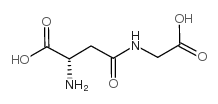'Normalization' of germfree mice after direct and indirect contact with mice having a 'normal' intestinal microflora.
J P Koopman, H M Kennis, A Lankhorst, G W Welling, M P Hectors, F Nagengast
Index: Lab. Anim. 20(4) , 286-90, (1986)
Full Text: HTML
Abstract
Germfree mice were associated via direct and indirect contact with a 'normal' microflora by placing 'normal' mice in an isolator with germfree mice. Relative caecal weights, the ratio of secondary to primary bile acids, the presence of filamentous segmented bacteria in the small intestine and faecal beta-aspartylglycine were normal 5 days after direct contact and 15 days after indirect contact. Enterobacteriaceae were demonstrated by the third day after direct contact and the fourth day after indirect contact. Volatile and non-volatile fatty acids in the caecal contents were variable and appeared to be unrelated to the 'normalization' process of germfree mice after association with a microflora.
Related Compounds
| Structure | Name/CAS No. | Molecular Formula | Articles |
|---|---|---|---|
 |
H-Asp(Gly-OH)-OH
CAS:3790-52-1 |
C6H10N2O5 |
|
Influence of zinc bacitracin and Bacillus licheniformis on m...
2003-10-01 [Vet. Res. Commun. 27(7) , 513-26, (2003)] |
|
[Rapid diagnosis of dysbacteriosis by detecting beta-asparty...
1985-08-01 [Zh. Mikrobiol. Epidemiol. Immunobiol. (8) , 15-8, (1985)] |
|
Effects of selective oral antimicrobial prophylaxis and syst...
1989-08-01 [APMIS 97(8) , 705-14, (1989)] |
|
[Changes in the microflora of the large intestine in rats ad...
1987-03-01 [Antibiot. Med. Biotekhnol. 32(3) , 206-10, (1987)] |
|
Identification of an acidic dipeptide, beta-aspartylglycine,...
1984-11-01 [J. Neurochem. 43(5) , 1375-84, (1984)] |